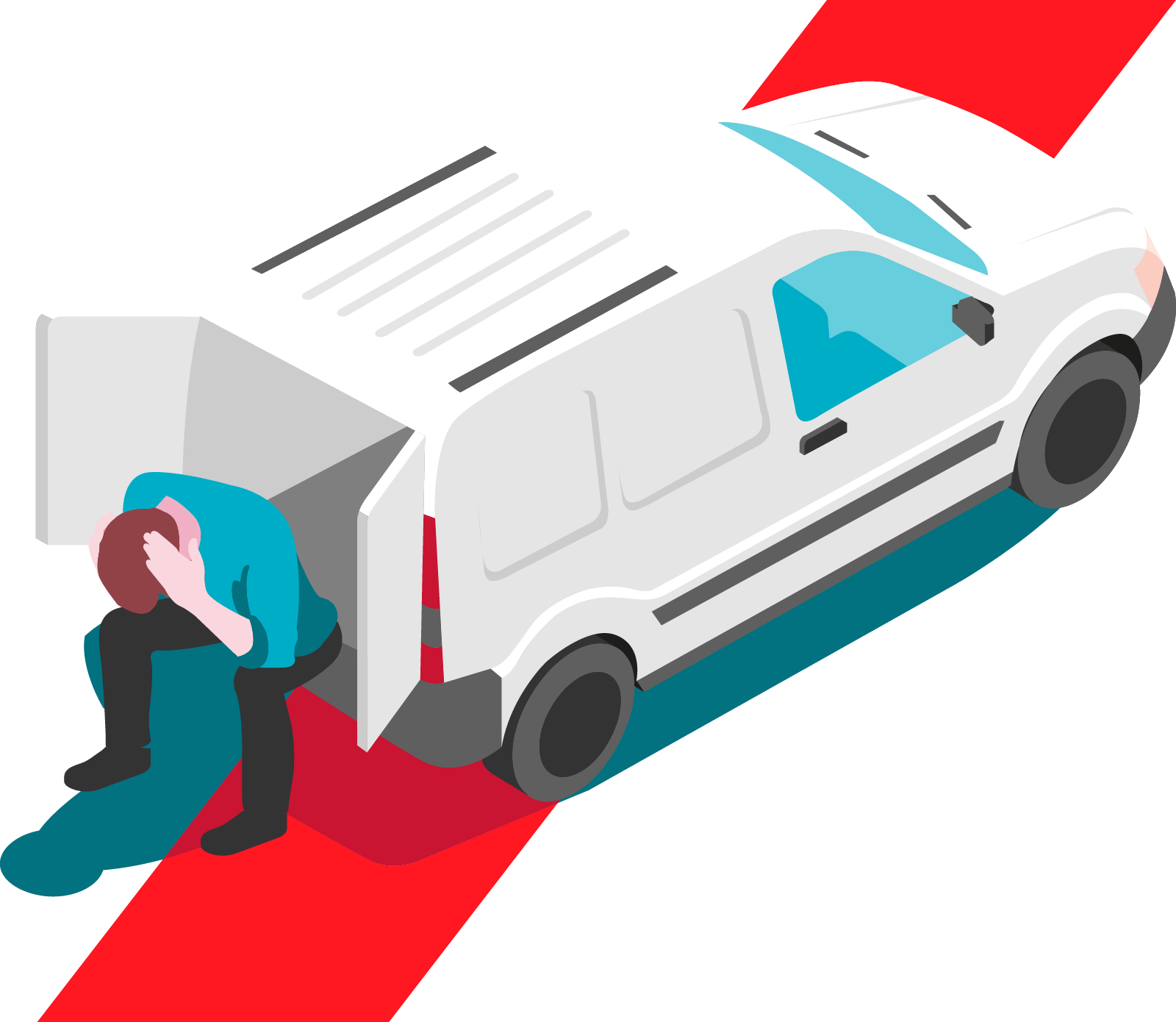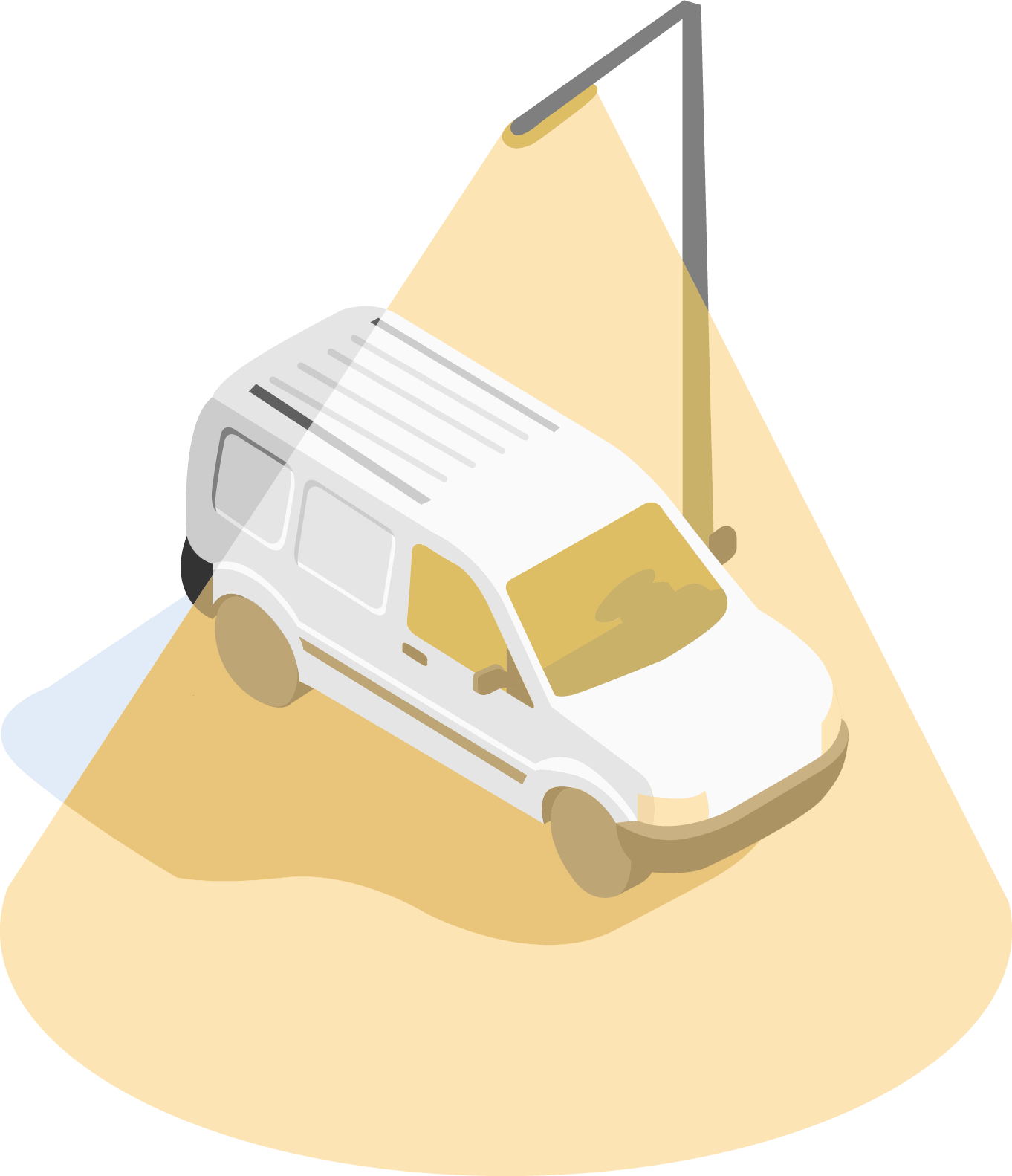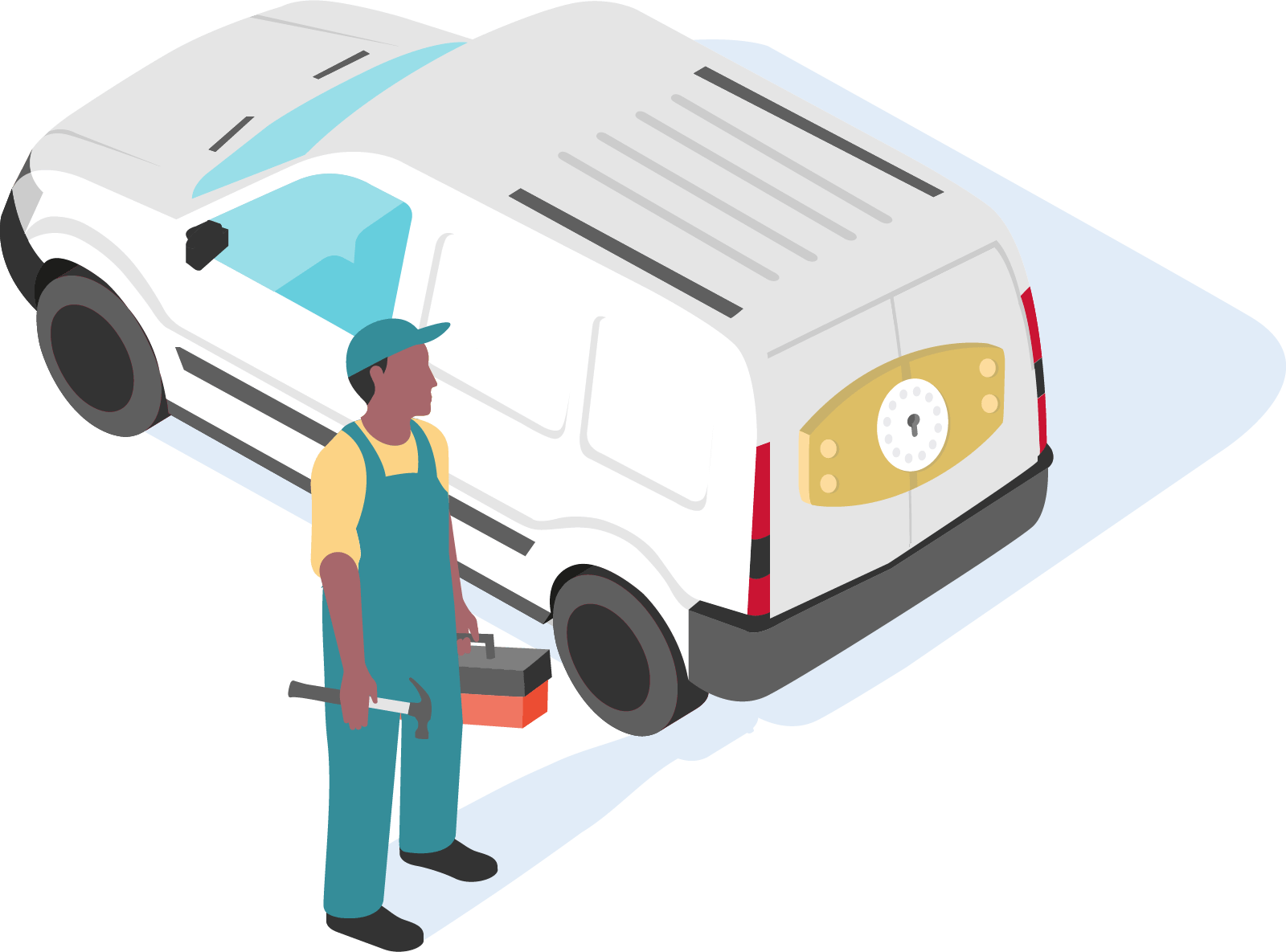
Van security: how to keep your van safe from theft

A van is broken into every 23 minutes in the UK. There’s a market for second hand tools, and for the less scrupulous seller, the back of a van provides rich pickings.
In the event of a break in, you’re left with an empty cargo area, and if you’re especially unlucky, a wrenched-off door or smashed windows. In the worst-case scenario perpetrators may simply take the whole van and your livelihood along with it.
Your insurance policy may protect you from financial loss and keep you on the road – but if you’re self-employed, with no back-up plan or pool of company vehicles to draw on, having a damaged van or lacking the tools of your trade can cause your business to grind to a halt.
Here, we look at some straightforward measures you can take to help make your van less of a target, hopefully preventing thieves from attempting to break into your van in the first place.
Location and behaviour
The first rule of keeping your van safe? Location, location, location...
Secure Parking
A van parked on its own in a dark alley is going to be an easier target than one parked under a street light or in a busy car park with CCTV. If you’re out and about, look for car parks that meet the Park Mark safe parking criteria (a quarter of the UK’s car parks have achieved this).
Do you keep your work van at home most nights? If your driveway is gloomy, think about installing motion-sensor lighting to further deter would-be thieves. If you have a garage that’s large enough to hold your van, make sure to tuck it away indoors every night – breaking into a house or secure outbuilding to steal tools is harder than getting into a vehicle, and an opportunist tool thief may balk at the thought of burglary.

No valuables left behind
Don’t just have a sign stating ‘No tools left in van overnight’ – actually remove them at the end of each working day. If you must leave anything valuable in the van, make sure it’s not visible. A thief is less likely to break into your vehicle ‘just in case’ there’s something worth stealing.
Preventing the ‘peel and steal’
‘Peel and steal’ is a way of wrenching the door off a van without needing any specific tools. However, being conscious of where and how you park your van could be a really easy way to prevent it.
To protect your side door, make sure you park your van next to a wall. Rear doors can also be a weak point, so if you have barn doors, reverse park against a building to buffer your van’s security. If you have staff that drive your company vehicles, make sure they’re aware of simple van security measures like this.
Guarding against opportunistic thieves
This might sound like a no-brainer, but always check to make sure your van is locked and don’t rely purely on visual signs or familiar clicks – even when you’re working on site and coming and going throughout the day.
Never leave your windows open, and again, don’t leave valuables such as money and phones on prime display. Never leave your keys in the van unattended, even if popping out for a few seconds to make a delivery or jump into a store – most insurers won’t cover you from theft in these circumstances. And whenever you’re finished with your vehicle for the day, make sure to remove your stereo and sat-nav if they aren’t permanently fitted to your vehicle.
You can get extra-strong, lockable tool boxes that can be fixed to the floor of your van. This is deeply inconvenient for the opportunistic thief, as is a lockable clamp that fixes your ladder to the roof rack.
Security features
From old fashioned steering locks to modern GPS tracking, security features for vans have come a long way. But remember, if making any modifications to your van, be sure to let your insurer know as any changes could affect your policy too.

Security modifications
Most new vans will have robust security systems as standard, which are Thatcham Category 2 approved. However, if you have an older van there are still some straightforward security modifications you can carry out to protect it from thieves.
An old-fashioned steering lock is still one of the most effective methods of preventing van theft. For a higher-tech approach, you can install a tracker device and pay a subscription to a tracking provider. Although the latter can’t prevent van theft, it could help increase your chances of tracking and recovering it if it’s stolen.
Some dash-cams have a 'parking mode', and the camera will wake up if an intruder sets off the sensor. However, it's a valuable item itself, so be careful where you keep it when you’re not using your van.
Fitting extra locks
The solid-looking stoplock works by linking the pair of rear van doors together, preventing them from being prised apart. They can also be fitted to side doors.
The slam lock is so called because it automatically locks when the van door is shut. This can be retro-fitted and works with your existing locking system. It’s ideal when you’re unloading from your van and have your hands full.
The deadlock is an additional lock and is normally used as an extra line of defence when locking up for the night. It must be fitted properly, like a house door lock, and is operated manually by turning a key (remember those?).
If fitting any additional locks to your vehicle, we recommend letting your insurer know first. Some locking devices could attract a discount on your insurance premium, while others may not be approved or could invalidate your cover in some cases.
Keeping your key fob safe
You may have heard about key fobs being hacked which, according to car security firm Tracker, accounted for 66% of all stolen vehicles investigated in 2016. Thieves have used a device that communicates with the legitimate key fob, and can unlock and even start the car.
However, there’s a really simple way to avoid these ‘relay attacks’: by keeping your key in a ‘Faraday sleeve’. These little pouches work by blocking the radio transmissions and are cheap and easy to get hold of.
Building modifications
Do you really need half-glazed rear doors? It’s not as if your tools want natural daylight, and you’re much better off without them on display, so think about replacing those glazed panels. An easier fix to prevent an opportunistic smash-and-grab attack is to have your windows coated with security film that prevents the glass from shattering.
A bulkhead between the cab and the storage area also makes it harder for thieves to peer inside. Just remember to discuss any planned modifications with your insurer.
Securing the catalytic converter
Because your catalytic converter is made from metals with a good resale value, it’s yet another target for thieves. Van ‘cats’ are easier to reach and remove than those on cars, so invest in a catalytic converter anti-theft device, which holds it more securely in place.
Prepare for the worst
As the old saying goes: hope for the best, but prepare for the worst…
Mark your property
You can register your equipment with a system such as Immobilise. This is a database of property ownership which can be accessed by the police to track stolen goods.
Mark your tools with an ultraviolet pen, which are inexpensive to buy and leave an indelible mark that’s invisible until it’s held under UV light. Alternatively, a visible mark can be a deterrent as well as an identifier, and it’s worth getting valuable tools engraved. It’s harder to sell on an item which has been clearly marked.

Keep an inventory
Keep an inventory of all your tools, either on a spreadsheet or notebook (kept away from the tools) by listing the make, model and serial number of all your business’s portable equipment. It’ll take a bit of admin to set up, but after this it should be very easy to keep up to date – and could save you money if the worst happens down the line.
Make a habit of holding onto the receipt for everything you buy, as these can help you demonstrate the value of an item.
Taking out business van insurance
Business van insurance will help to keep your business moving should your van fall victim to thieves. It’ll cover any repairs, and most policies will provide you with a courtesy vehicle so that you’re not off the road completely.
To make sure you have the right cover for your tools and other contents or work equipment, speak with your insurance provider, as this is not usually covered in standard van policies.
Making a claim
If the worst should happen, here’s a shortlist of the documents and details you’ll need to have on hand before making an insurance claim:
- Insurance policy details. Keep these and the company’s contact details on your phone.
- Details of the items that have been stolen or damaged and their serial numbers if possible.
- Crime Reference Number (CRN). Always report a theft to the police. They’ll give you the CRN that you’ll need for your insurance claim.
From adding extra locks, record-keeping and being mindful of where you park, there are a number of easy steps you can implement to help deter thieves from targeting your van. Knowing that you’ve got the right van insurance to keep you on the road if your vehicle comes to an unexpected stop could help give you extra peace of mind, and more importantly, keep your business going no matter what.
Keep your van moving – no matter what
Maintaining the security of your van can be challenging. With AXA van insurance, it’s easy to get the tailored cover you need to keep your van going from A to B.